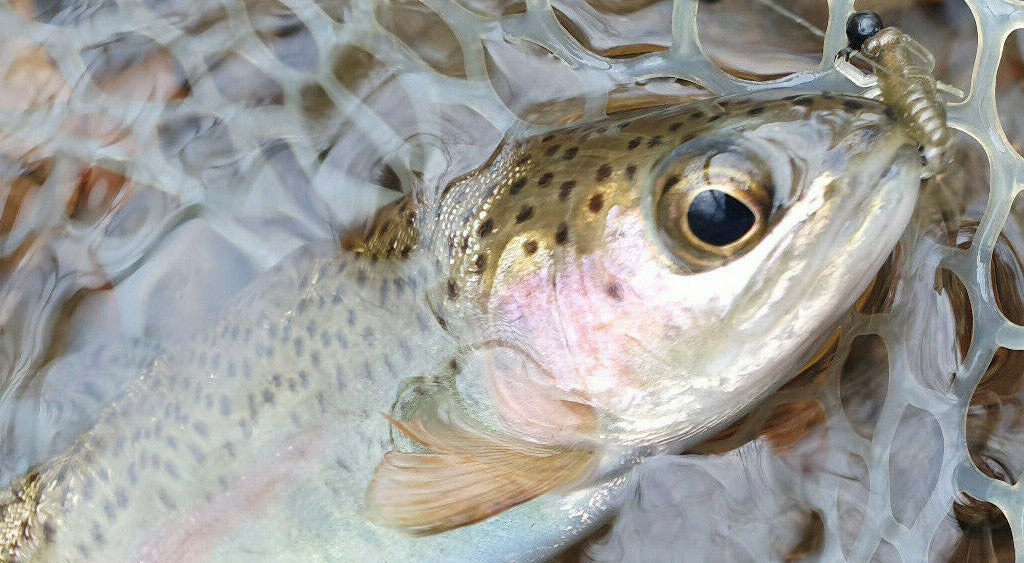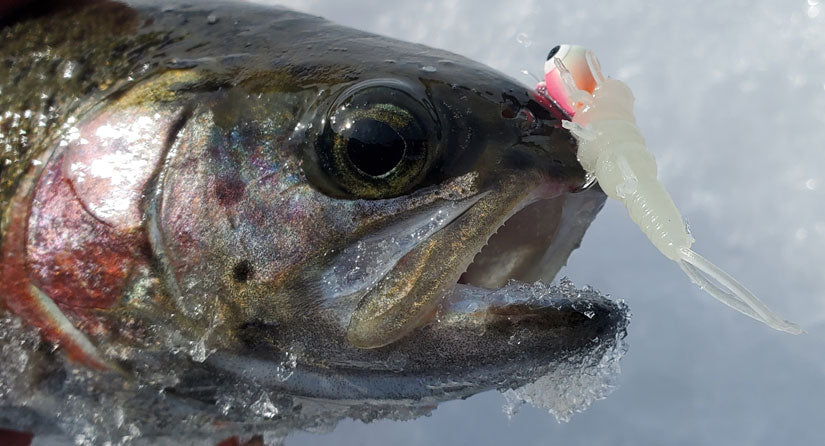
Using soft plastics to catch trout
Using soft plastic lures is one of the most effective yet underutilized tactics for trout fishing. When fished correctly, soft plastics can work incredibly well for all species of trout. In some ways fishing soft plastics for trout can be like fly fishing with nymphs. What do we mean by that? Let us explain.
A key concept of fly fishing is matching the hatch. That means using flies that resemble what the fish in a given place actually see and eat. While materials like feathers and fur can help fly tiers match the hatch pretty well, sold plastics can be used to create nearly exact replicas in large quantities.
Another important part of fly fishing with nymphs is the dead drift. Dead drifting means making sure your offering rides the current naturally. In most fly fishing scenarios you want your fly to drift right along with the water. If it drags against the current or races downstream, the fly will look unnatural and put off trout. The same applies with a lot of soft plastic fishing too.
Soft plastics for trout
Soft plastics are molded. So they can be made to look like just about anything once the proper mold is created. While a lot of commercially made soft plastics resemble large things like frogs and lizards, there are also some smaller soft plastic lures on the market. Long popular in countries in parts of Europe, Australia and Japan, these scaled down soft plastics are becoming increasingly available in the United States.
The most well known soft plastics for trout in the United States are probably the Berkley Trout Worm and the Trout Magnet. Both can be very effective for trout, which helps explains why they are so commonly used. Yet there are some lesser known soft plastics that catch trout continuously.

We offer a full line of custom soft plastic lures that can be incredibly effective for trout. At this point we carry soft plastic replicas of mayfly nymphs, multi nymphs, hellgrammites, caddis pupas and trout worms. We also carry a few general non-specific offerings like micro nymphs and Crappie Carrots that can work just as well in the right conditions. No matter what the trout are eating we've got you covered.
If you are just starting out, you can't really go wrong with a pink trout worm. It just catches fish. Our caddis pupa in colors like green are also great for prospecting. They catch a lot of trout in many different conditions. That is understandable since caddis are one of the most widespread insects around. For fish that are pressured, picky, or holding in low clear water try a smaller approach. Our mayfly nymphs and micro nymphs work well in those conditions.
How to trout fish with soft plastics
Dead drifting is one of the best ways to present soft plastics to trout. Remember that insects make up the bulk of the diet of most trout. Trout tend to feed on insects that either fall in the water or become dislodged from the bottom. Some nymphs and aquatic insects will scuttle or swim around, but most just drift along until they can cling to something.
There are two main ways to drift a soft plastic lure. The first is to simply run a hook through the lure then add some split shot or twist on lead further up on the line. The trick is to use the right amount of weight so that the lure bounces near or along the bottom without getting hung up.

Another way to drift soft plastic lures effectively is to use a float. First, you run your line though an appropriate float. If you're fishing with small soft plastics that could be an E-Z Float or Teardrop Styrofloat. If you're using larger soft plastics on big water that could be an A-Just-A-Bubble or an E-Z Crappie Float. A few feet below the float you tie on a jig head. A ball jig head works well most times. You hook your soft plastic on the jig. You set the float so that your jig floats just over the bottom. Then you cast out and watch your float.
Check the float to make sure your drift is floating naturally with the current. If it is floating either too fast or too slow, make some adjustments. Sometimes that means keeping your line off the water. Other times it means repositioning yourself to get a better drift. In fast water you may have to add more weight to your line. The goal is to let your soft plastic lure drift along naturally with the current. Then it is just a matter of watching the float for a take.
Of course you can also swim your soft plastics through the water. Especially if they resemble things like fishes and leeches that normally move about. Still, you should focus on making your retrieve look natural. For example, use the action of your rod tip to work a soft plastic minnow through a run. Make it look like a sick or dying minnow. Or drag a soft plastic stonefly across the bottom where crayfish are found. Trick the trout into biting.
Don't be afraid to try different things until you know what works either. You can be sure that soft plastics absolutely catch trout. Carrying a variety of soft plastics gives you more options. Mastering the use of soft plastics can make your time on the water more effective and enjoyable. Try them out.
